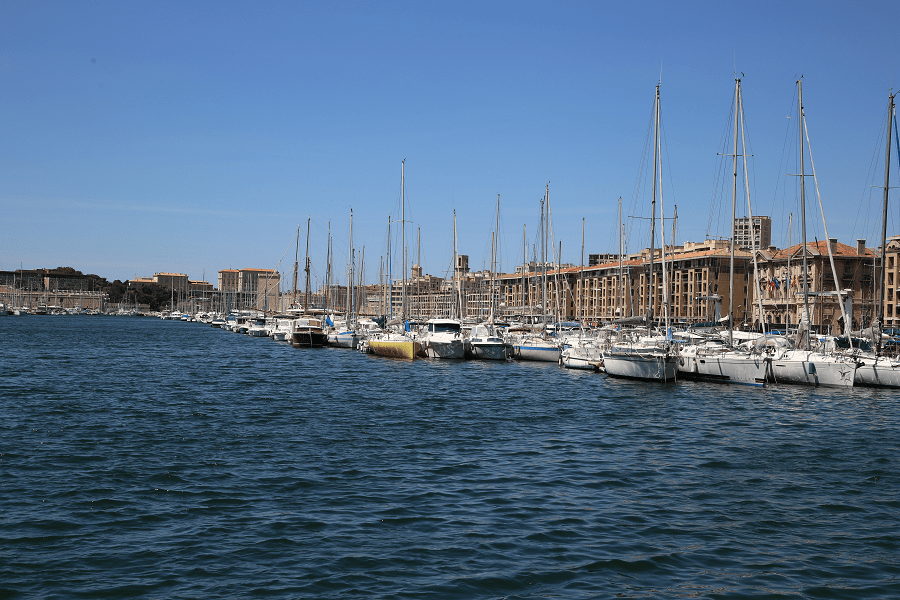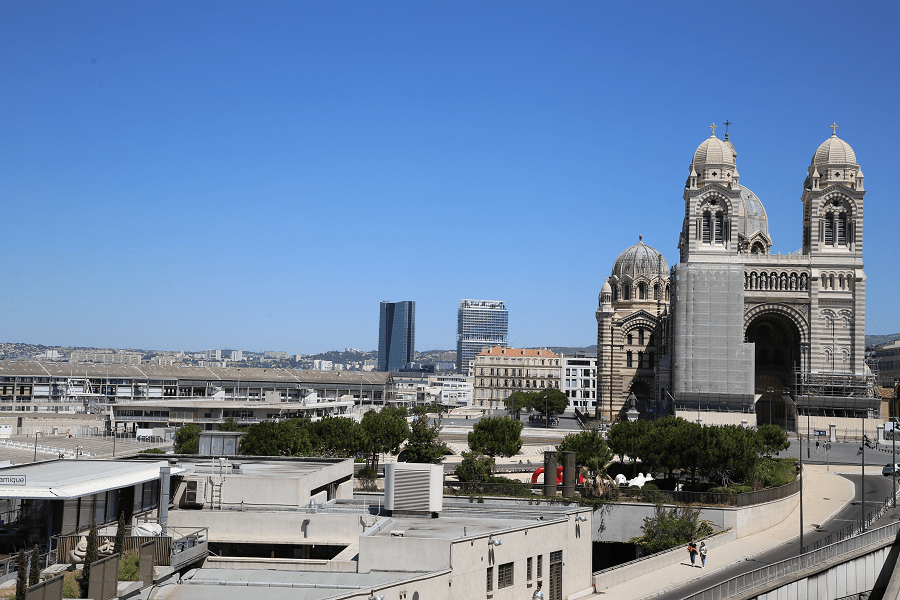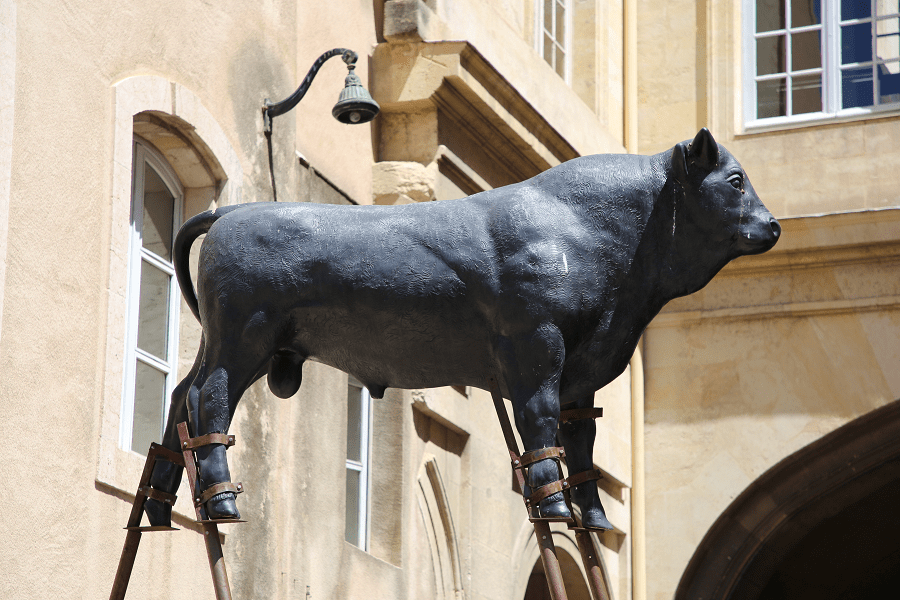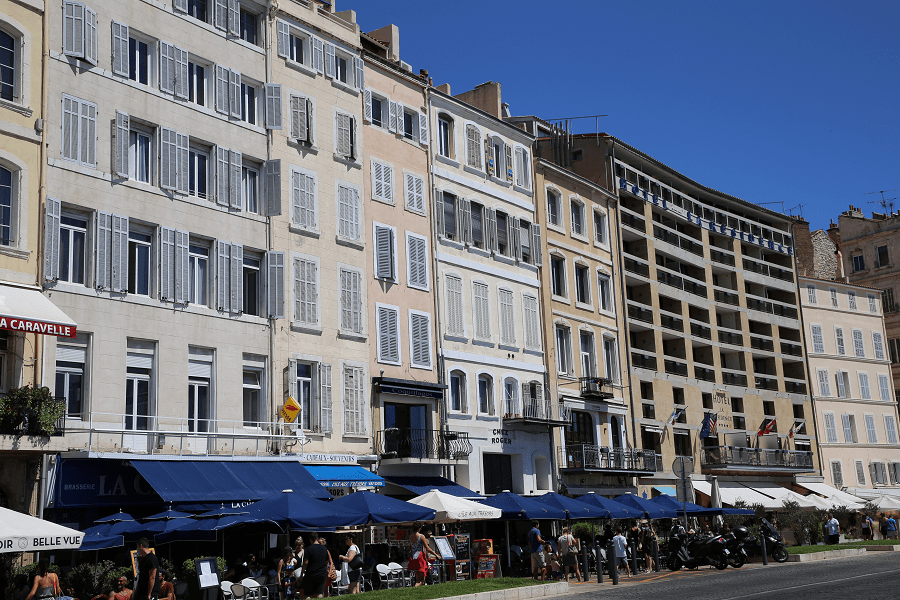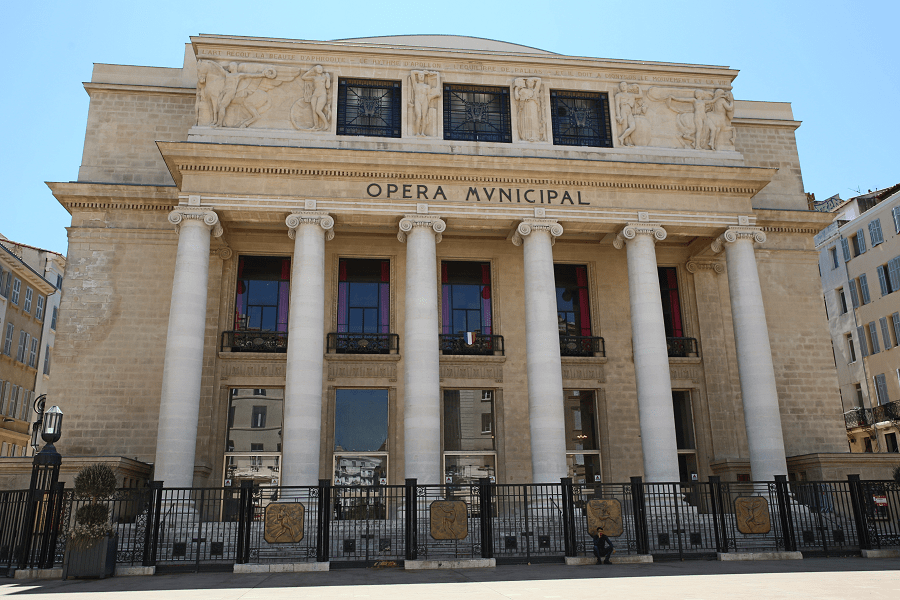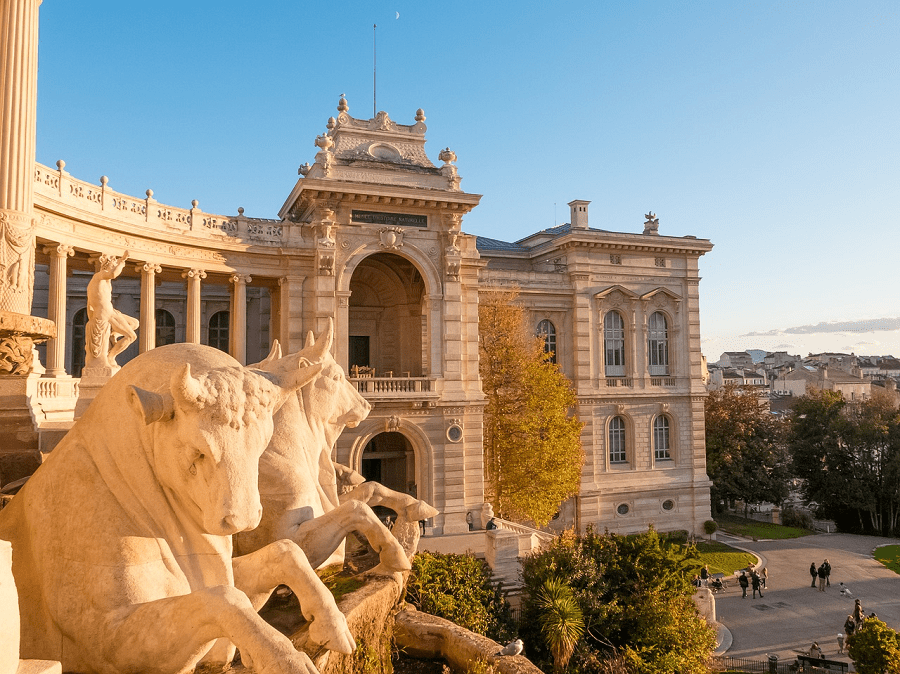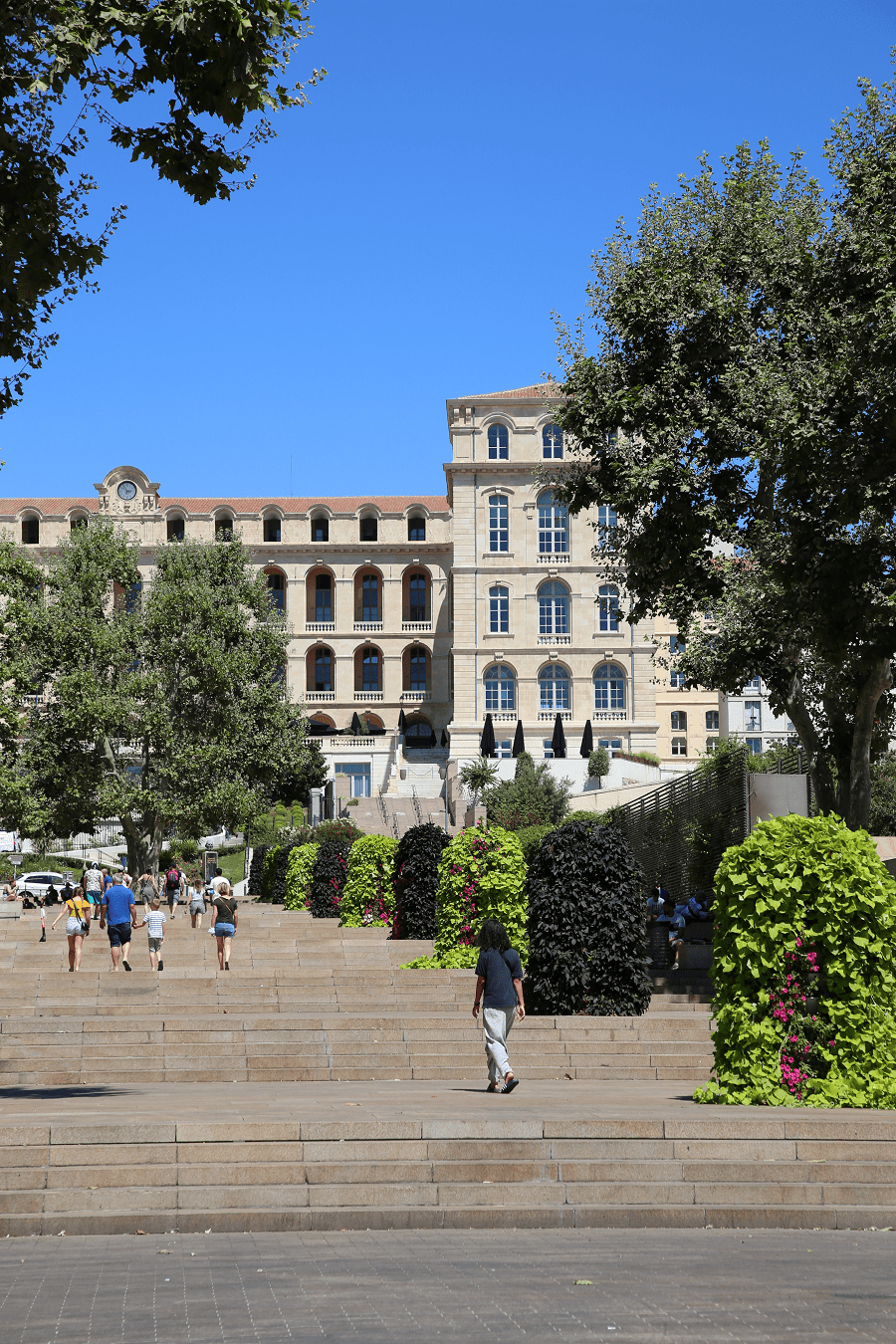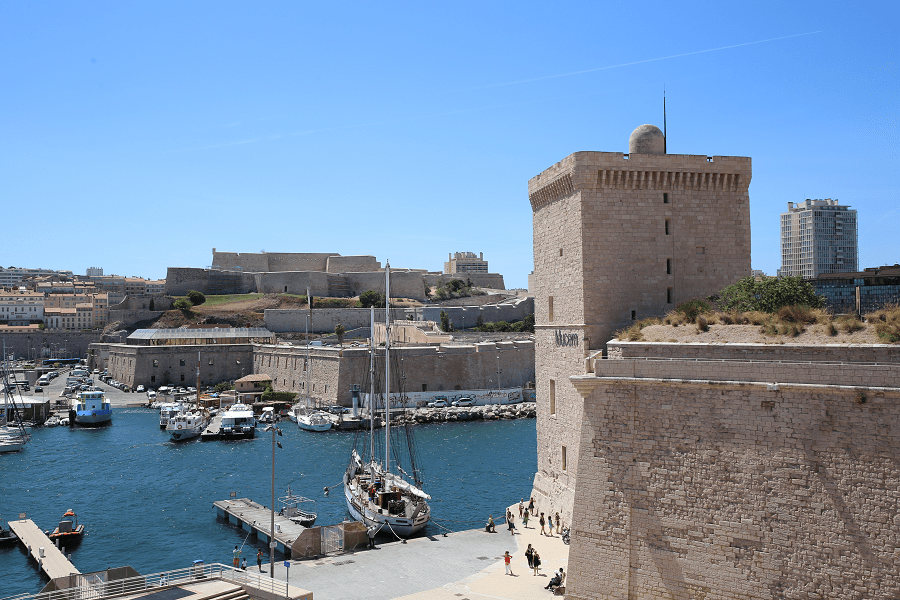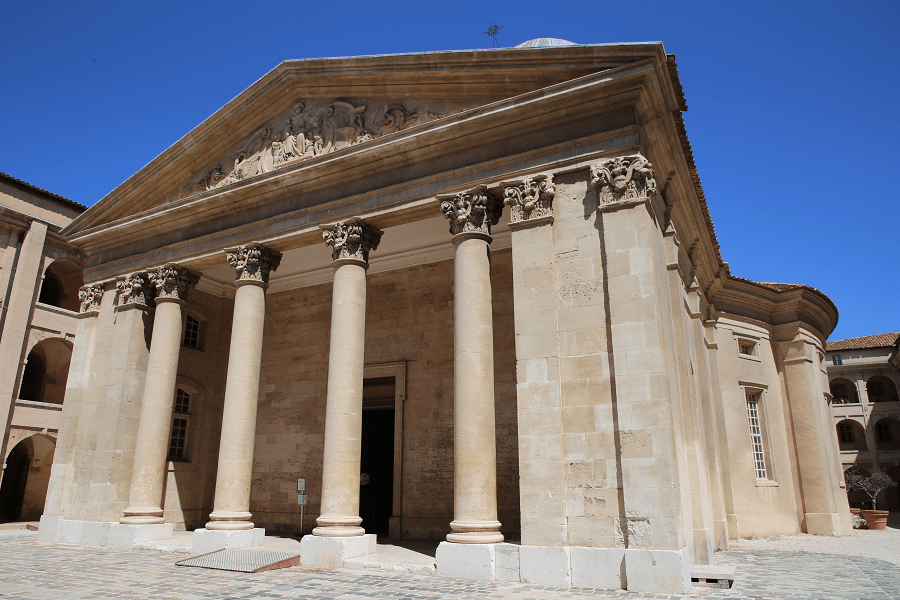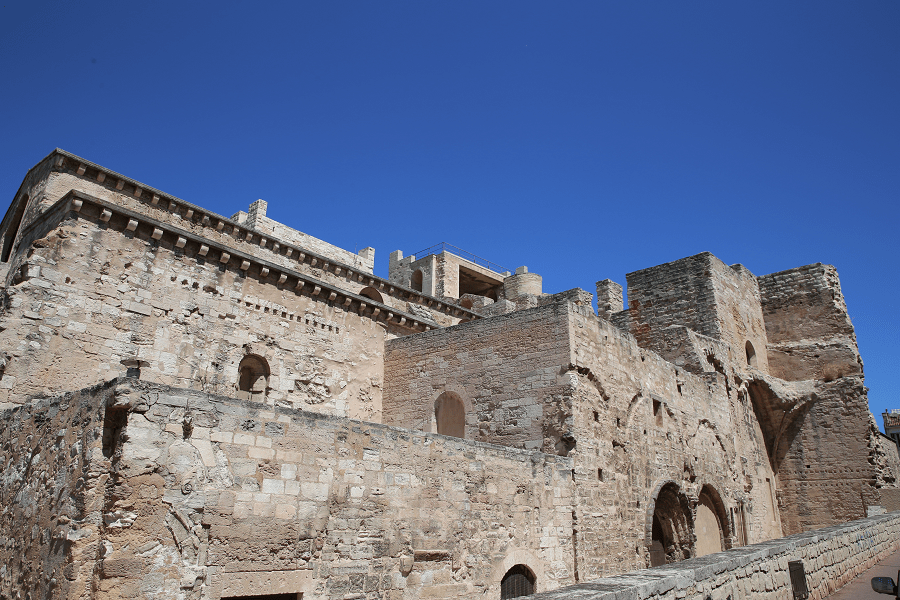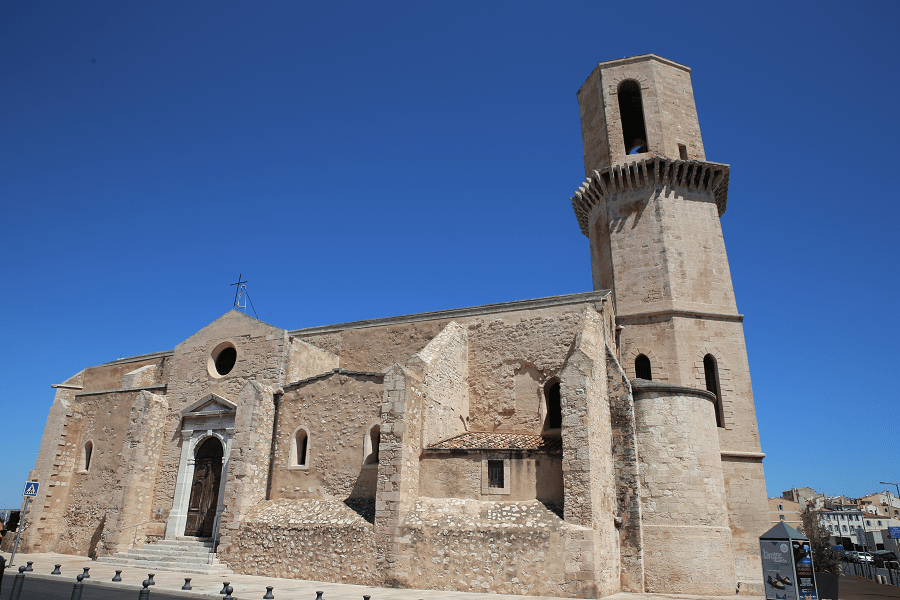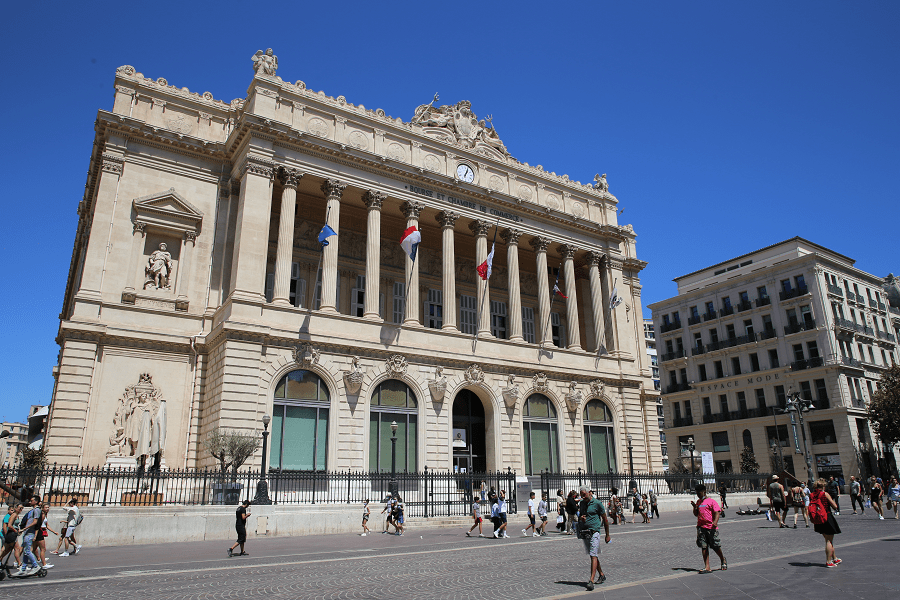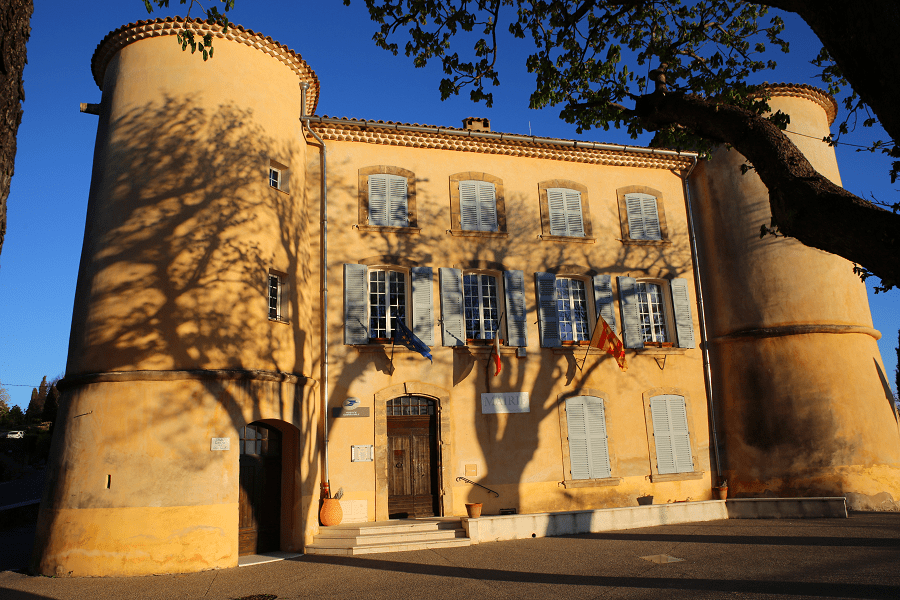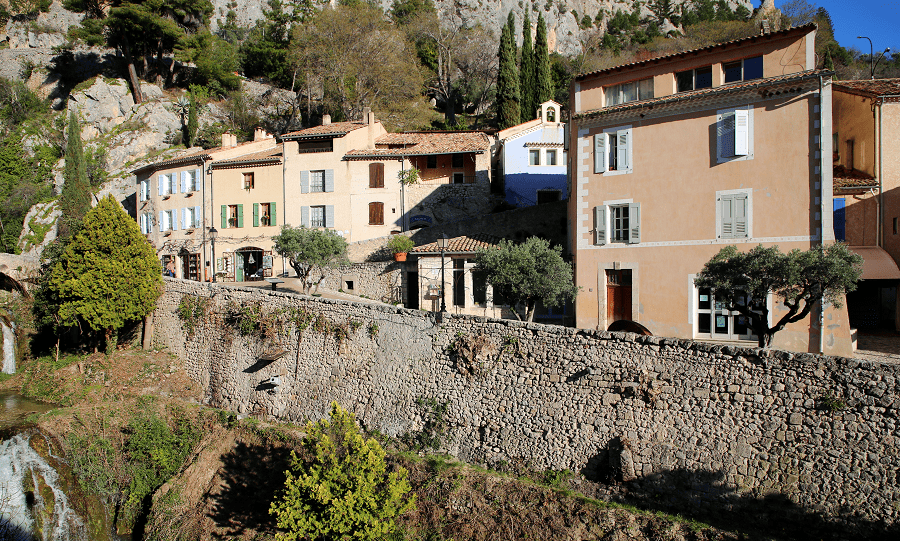Marseille (Fr. Marseille) is the prefecture of the department of Bouches-du-Rhône and region of Provence-Alpes-Côte d’Azur in France. It is located on the Mediterranean coast near the mouth of the Rhône. Marseille is the second largest city in France.
The Grand Port Maritime de Marseille (GPMM) and the maritime economy constitute major centres of regional and national activity, and Marseille remains the leading French port, the second Mediterranean port and the fifth European port.
GPMM is an important target for millions of tourists each year from worldwide. With its beaches, heritage and culture (24 museums and 42 theatres), Marseille is one of the most visited cities in France, with 4.6 million visitors in 2019.
Marseille is also France’s second largest research centre with 3,000 research scientists within Aix Marseille University.
Tourism and main attractions
Located to the south of the city, the Cosquer cave, discovered in 1992, is an ornate Palaeolithic cave, frequented between 27,000 and 19,000 before the present, whose entrance located under the sea makes access difficult.
Few traces still exist of the Greek or Roman city. The most visible are those of the ancient port, located northeast of the current Old Port, in the Jardin des Vestiges in the heart of the Marseille History Museum. There one can find remains of the Greek fortifications, of the defence tower, of the Roman paved way, of the freshwater basin or of the funeral terraces. A specific development and valuation in 2020 allows one to better understand the functioning of the ancient port.
The city having always rebuilt on itself, medieval Marseille is, according to Thierry Pécout’s (a French medievalist historian, specialist in the history of the medieval political and ecclesial institution, of Provence in the Middle Ages) expression, a “city of paper” that only historians and archaeologists can revive the disappearance of many medieval buildings and to remodel the city in modern and contemporary era.
Saint-Victor Abbey, the oldest parts of which date from the eleventh century, was built on what is perhaps the oldest Christian place of worship in France. The Notre-Dame-de-la-Galline chapel would have been built on a place of worship dating from 1042.
The Vieille Major, the old cathedral of the city, was built in the twelfth century on the site of a first church dating from the end of Antiquity.
The Saint-Laurent church, built in the thirteenth century in a Provencal Romanesque style, is the parish of the fishermen of Marseille.
Fort Saint John is located on the site of the former foundation of the Knights of the Order of Saint John of Jerusalem and still has vestiges of the chapel from the twelfth to the thirteenth century.
Of the three forts built at the entrance to the Old Port by Louis XIV to watch over the city in the seventeenth century, only the forts of Entrecasteaux and Fort Saint-Nicolas are still owned by the Ministry of Defense. Fort Saint-Jean, whose square tower was built in the mid-fifteenth century by René d’Anjou, has been part of the site of the Museum of European and Mediterranean Civilizations since 2013. Protected as historical monuments, it has come under the Ministry of Culture since the 1960s but has only recently been made accessible to the public. Of the arsenal of galleys which occupied the south shore of the port, only the captaincy remains today.
The bastides (fortified walls) are a characteristic element of the Marseille region. There were more than 6,500 in 1773. This practice was so widespread that Stendhal considered that “this is why there is no show on Saturday: this day—there, as soon as the stock exchange is over, everyone flees to their Bastide.”
There are 254 of them today, but even though some like Buzine have been renovated or converted, many are in disrepair and threatened with destruction.
Many Marseille monuments were built during the second half of the nineteenth century, when the city was booming economically, especially during the Second Empire. This is particularly the Pharo Palace (1858), the Stock Exchange Palace (1860), the Prefecture Hall (1866) or the Reformed Church (1886), later in neo-Gothic style.
Henri-Jacques Espérandieu is the author of several famous monuments of the city such as the Palais Longchamp (1862), the Basilica of Notre-Dame-de-la-Garde (1864) and the Palais des arts (1864). Built between 1855 to 1864 with Henri Révoil, Notre-Dame-de-la-Garde, also called the Good Mother, is famous for its Roman-Byzantine architecture and its gilded copper statue of the Virgin and Child which dominates the building, work of sculptor Eugène-Louis Lequesne.
Marseille retains many traces of its industrial history and many of these places are in the process of being converted. The tobacco factory, built in 1868 in the Belle de Mai district is, after having been an industrial wasteland for a long time, has been since the end of the 1990s, occupied by a cultural place—the Municipal Archives, the INA, the CICRP and a media centre.
In the Joliette district, the Arenc grain silo has been converted into a performance hall and the huge docks have been completely renovated and converted into offices and a shopping centre.
From the soap industry, only three factories remain in operation in the Northern Quarters. Other factories, some of which are not in operation, dot the north and east of the city.
The architect Fernand Pouillon constructed many buildings in the years following World War II. He was notably in charge of the reconstruction of the Old Port district destroyed during the roundup (the famous Pouillon buildings) or of the Sanitary Control, since 2013 occupied by the Regards de Provence museum.
In 1952, Le Corbusier built his Cité radieuse in Marseille (locally called “Le Corbusier” or the “house of the fada”), an example of brutalist architecture and its principle of Unity of housing. The building can be visited, and its panoramic roof terrace hosts a contemporary art museum, the MaMo.
As part of its urban renewal, the city today sees the construction of buildings of post-modern architecture such as the Museum of Civilizations of Europe and the Mediterranean, the CMA-CGM tower, the Villa Méditerranée and the La Marseillaise tower.
Marseille has 26 museums, the largest number in France after Paris, in particular the Marseille History Museum, the Cantini Museum, the Contemporary Art Museum, the Natural History Museum and the Fine Arts Museum.
The Museum of Civilizations of Europe and the Mediterranean (MuCEM), located on the J4 esplanade and in Fort Saint-Jean, opened in 2013. It is a national museum and the most visited of the city, with about two million visitors each year.
The Théâtre du Gymnase is an Italian-style theatre built in 1804. During the twentieth century, it served as a theatre with actors like Louis Jouvet, Jean Weber, but also as a concert hall with Jacques Brel, Reda Caire or Charles Aznavour. Closed in 1980 due to obsolescence, it reopened in 1986 thanks to the American patron Armand Hammer. It was also renovated in 2015 as well as its facade.
La Criée is Marseille’s national drama centre. Former fish auction, the theatre was founded in May 1981 and is located at 30, quai de Rive Neuve in Marseille.
Among the other theatres in the city: The Badaboum Theater, the Théâtre Massalia, the Merlan, the Bernardines, Joliette-Minoterie, the Toursky.
The Municipal Opera of Marseille was built in 1920 instead of the Grand-Théâtre in 1786, destroyed by fire in 1919. It has been classified as a historical monument since 13 February 1997.
Marseille has been home to a national ballet since 1972. Originally called Les Ballets de Marseille, the company is made up of around forty dancers, with Dominique Khalfouni, former star of the Paris Opera Ballet, as the main star.
There is also a place for teaching music and dramatic art, the conservatory with regional influence in Marseille.
Beaches
The town of Marseille has a seafront of 57 kilometres including 24 km of the Massif des Calanques (creeks).
The creeks extend over more than 20 kilometres of coastline on the Mediterranean Sea between the village of Goudes, to the south-west of the city and Cassis. It is one of the most remarkable sites in France and a major area of natural resources and sports activities. The creeks have a million visitors a year.
At the end of a process started in 1999, a Calanques National Park was created in 2012, to protect its natural heritage on land and at sea. It covers a territory of 11,100 hectares on land, on the municipalities of Marseille, Cassis and La Ciotat and 141,300 hectares at sea. It is the first peri-urban national park in Europe.
The main beaches are Prado, Catalans, Pointe-Rouge and Prophète beach. The Prado beaches, officially “Gaston Defferre beaches”, were developed by the embankments obtained by the digging of the underground tunnels. In 2019, the city of Marseille is installing sensors for the redevelopment of beaches for the Paris 2024 Olympics.
Marseille also has nearly 100 scuba diving sites, the most famous being the Riou archipelago, the Frioul archipelago and the island of Planier.
Gastronomy and best restaurants
Marseille cuisine is part of Provençal cuisine. Among the typical specialties of the city are bouillabaisse, pied packets, shuttles, frégi chichis.
Marseille is known for its “pizza trucks” and is sometimes considered one of the pizza capitals along with New York and Naples. Invented in Naples in the seventeenth century, pizza spread rapidly in Marseille from the 1900s, with the many Italian immigrants reproducing their know-how by opening traditional restaurants. At the time when Gaston Deferre was mayor of the city, he authorized municipal officials to combine their activity with another activity relating to the commercial sector; this is how pizza trucks were established throughout the city, allowing municipal officials to find a source of additional income after their day’s work.
The butter pastries flavoured with orange blossom water, were created in memory of the first Christians who arrived by boat from the holy land to Marseille with Marie-Madeleine who would have spent her first night near the Saint Victor basilica. They are blessed on the day of Candlemas, but the best artisans in town make them every day.
Pastis, aniseed alcohol created by Paul Ricard, is the emblematic drink of the city as well as, to a lesser extent, Cristal anisette. Very popular in the North and East of France, the Picon bitter was also created in Marseille.
There are more than 30 Michelin guide restaurants in Marseille. The best:
Le Petit Nice, Anse de Maldormé, Marseille, 130 – 390 EUR • Seafood. Three stars
AM par Alexandre Mazzia, 9 rue François-Rocca, Marseille, 79 – 240 EUR • Creative cuisine. Two stars
Saisons, 8 rue Sainte-Victoire, Marseille, 29 – 85 EUR • Modern Cuisine. One star
Shopping
Main shopping area is the rue Paradis. Shops in Marseille are usually open from Monday to Saturday between 10am and 7pm non-stop, though some smaller boutiques have lunch time.
Markets:
Craft Market (Les Artisanales du Vieux-Port), also sometimes called the Cruise Passengers’ Market (Marché des Croisiéristes). In summer, a craft market offers Marseille soap, santons (traditional Christmas crib figures), provençal honey, olive wood artefacts, indiennes fabrics and more in the Old Port area.
Fish Market (Marché aux Poissons) in the Old Port
Les Halles de la Major – a covered food market. Located next to the Musée Regards de Provence
Saint Victor market – a covered food market in the rue d’Endoume near Saint Victor Abbey on the south side of the Old Port.
Flea Market (Le Marché aux puces) in the fifteenth arrondissement in the north of the city.
Transport and how to get to?
Marseille has the name of the most congested city in France (and the eighteenth largest in the world).
Roads:
Among the 25 French urban communities with more than 270,000 inhabitants, Marseille is the one with the highest rate of people killed per million inhabitants by transport after the Basque Country urban community.
Three highways enter Marseille: the North motorway (A7) crosses the northern districts and ends in the Saint-Lazare district near Place Jules-Guesde and Marseille-Saint Charles train station. It is the southern end point of the large north-south cross formed by the A1, A6 and A7 motorways connecting Lille to Marseille via Paris and Lyon. The A7 motorway also connects Marseille to Nîmes, Montpellier and Toulouse (via the A9 and A54) and Aix-en-Provence, Gap and Grenoble (via the A51); the Littoral motorway (A55) from Martigues crosses the 16th arrondissement then takes a footbridge to skirt the port area before crossing La Joliette in a tunnel and ending at the northwest end of the Old Port.
Shortest distance by car:
From Menton (tolls): 2 h 29 min (229 km) via A8
From Monaco (tolls): 2 h 25 min (221 km) via A8
From Beaulieu-sur-Mer (tolls): 2 h 27 min (207 km) via A8
From Villefranche-sur-Mer (tolls): 2 h 25 min (205 km) via A8
From Nice (tolls): 2 h 10 min (198 km) via A8
From Cagnes-sur-Mer (tolls): 1 h 58 min (186 km) via A8
From Antibes (tolls): 2 h 1 min (184 km) via A8
From Cannes (tolls): 1 h 56 min (171 km) via A8
From Mandelieu-La Napoule (tolls): 1 h 40 min (162 km) via A8
From Fréjus (tolls): 1 h 34 min (140 km) via A8
From Saint-Raphaël (tolls): 1 h 39 min (143 km) via A8
From Sainte-Maxime (tolls): 1 h 38 min (144 km) via A8
From Saint-Tropez (tolls): 1 h 56 min (144 km) via A8
From Cavalaire-sur-Mer (tolls): 1 h 53 min (125 km) via A50
From Toulon (tolls): 49 min (65.8 km) via A50
From Aix-en-Provence: 40 min (33.0 km) via A51 and A7
From Nîmes (tolls): 1 h 29 min (123 km) via A54 and A7
From Avignon (tolls): 1 h 8 min (103 km) via A7
From Montpellier (tolls): 1 h 53 min (169 km) via A54
From Sète (tolls): 2 h 3 min (198 km) via A9
From Agde (tolls): 2 h 18 min (222 km) via A9
From Pézenas (tolls): 2 h 19 min (224 km) via A9
From Béziers (tolls): 2 h 27 min (234 km) via A9
From Perpignan (tolls): 3 h 5 min (318 km) via A9
From Argelès-sur-Mer (tolls): 3 h 25 min (345 km) via A9
From Collioure (tolls): 3 h 31 min (352 km) via A9
From Narbonne (tolls): 2 h 35 min (257 km) via A9
From La Baule-Escoublac (tolls): 9 h 37 min (1,062 km) via A7
From Saint-Nazaire (tolls): 9 h 34 min (1,047 km) via A7
From Nantes (tolls): 8 h 56 min (986 km) via A62
From Saumur (tolls): 7 h 48 min (857 km) via A7
From Les Sables-d’Olonne (tolls): 8 h 54 min (975 km) via A62
From Cognac (tolls): 7 h 9 min (762 km) via A62
From Angoulême (tolls): 7 h 6 min (760 km) via A62
From Eauze (tolls): 5 h 32 min (534 km) via A61 and A9
From La Rochelle (tolls): 7 h 34 min (823 km) via A62
From Rochefort (tolls): 7 h 14 min (795 km) via A62
From Saintes (tolls): 6 h 56 min (759 km) via A62
From Arcachon (tolls): 6 h 29 min (698 km) via A62
From Royan (tolls): 7 h 16 min (763 km) via A62
From Biarritz (tolls): 6 h 34 min (706 km) via A64
From Saint-Jean-de-Luz (tolls): 6 h 37 min (712 km) via A64
From Bayonne (tolls): 6 h 24 min (693 km) via A64
From Dax (tolls): 6 h 23 min (672 km) via A64
From Lourdes (tolls): 5 h 29 min (572 km) via A64
From Pau (tolls): 5 h 41 min (589 km) via A64
From Périgueux (tolls): 6 h 22 min (680 km) via A20
From Bordeaux (tolls): 6 h 5 min (646 km) via A62
From Toulouse (tolls): 3 h 56 min (404 km) via A61 and A9
From Carcassonne (tolls): 3 h 7 min (313 km) via A9
From Andorra (tolls): 5 h 44 min (494 km) via A9
Railways:
The opening of the LGV Sud-Est in 1981 marked the arrival of the TGV. The line was extended in 2001 by the LGV Méditerranée, which puts Paris at 3 h 30 min from Marseille.
The Saint-Charles station is also the terminus of the line from Marseille to Ventimiglia and receives TGV traffic to the west and north of France, as well as that of Intercités from the south-west via Montpellier and to Savoy and the Switzerland via Grenoble. It is also at the heart of the Provence-Alpes-Côte d’Azur (TER) regional express transport network, whose line to Aix-en-Provence was recently renovated and that to Toulon is being tripled.
Marseille actually has eleven other train stations on its urban territory, the most important of which are those of Blancarde, Saint Marcel, or even that of L’Estaque.
Nearest airport: Marseille Provence Airport. It is the fifth busiest French airport by passenger traffic and third largest for cargo traffic.
Public transport:
Bus: Marseille has 119 bus lines that serve the entire city as well as Allauch, Plan-de-Cuques and Septèmes-les-Vallons on a network of 950 km. The routes and numbering of the bus lines still largely repeat those of the old Marseille tram network, which was almost completely eliminated from the 1960s. Trolleybuses circulated in Marseille until 2004, when they were replaced by classic buses.
Due to the size of the city and the traffic difficulties, the average speed of Marseille buses is relatively slow, at 12 km / h.
Subway: The metro network has two lines covering 21.5 km and 30 stations. The first line was opened in 1977, the latest extension dating from 2019 with the opening of the Gèze station on line 2.
Tram: The tram has three lines totaling 15.8 km and 40 stops. The network was opened in 2007.
Main information
Area: 161.9 sq. km
Population: 870 000
Languages: French
Currency: euro
Visa: Schengen
Time: Central European UTC +1
Coordinates: 43°50′17″N 4°21′40″E





